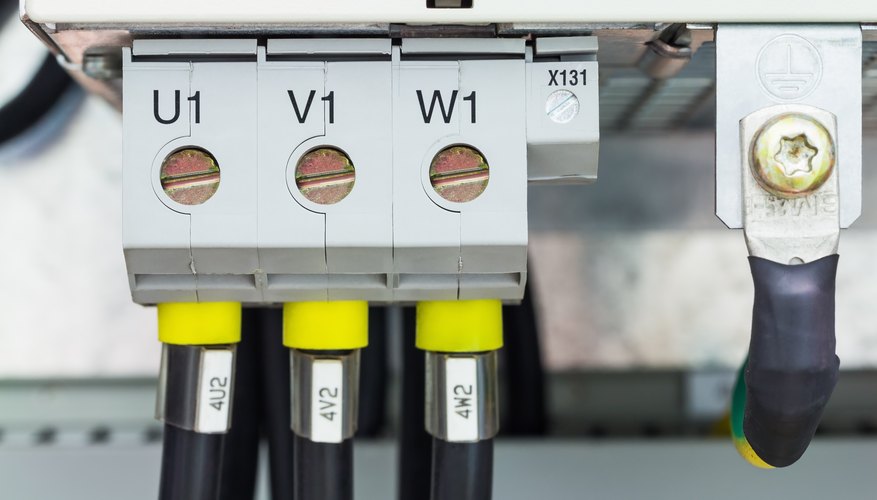OK, I still don't understand it then
This is how I remember these things: forget amps and volts etc.
A charger is rated to supply X kW in Y phases.
Each phase supplies X/Y kW
Your typical (in the UK) home charger supplies 7kW with 1 phase (single phase charger)
X = 7
Y = 1
Each phase supplies 7/1 = 7 kW
A GeniePoint charger supplies 22kW with 3 phases
X = 22
Y = 3
Each phase supplies 22/3 = 7 kW
An 11kW triple phase home charger supplies 11 kW with 3 phases
X = 11
Y = 3
Each phase supplies 11/3 = 3.6 kW
Those numbers I’ve rounded because of how we talk about chargers in common parlance. Exact numbers are different but also sometimes it’s unclear whether people refer to the number of kw supplied to the car by the charger, or charged into the battery by the car. A ‘seven kW’ charger really is rated to supply 7.4 kW and the car will probably only charge 6.5 kW. Both are seven kW but we know they are not really 7, but approx 7.
None the less, the OP said that his Tesla charges at 11kW and his mg4 at 3kW
It fits with the OP having an eleven kW triple phase home charger.
if the cable is a triple phase one, all three phases will be delivered to the car.
If the cable is single phase, only one phase will be delivered to the car.
If the car is capable of accepting all three phases, using a triple phase cable will ensure the total charging power is supplied to the car.
If the car is capable of accepting only one phase, using a triple phase cable will only deliver one phase , a third of the chargers supply, to the car.
If the car is capable of accepting three phases, using a single phase cable will only deliver one phase, a third of the chargers supply, to the car.
What complicates matters further is the ampere rating of each phase (charger/cable/car)
Luckily these things are pretty standardised these days, but it’s easy to pick up the wrong cable without realising it’s the wrong rating for that charger/car phase combination.
A single phase Seven kW charger will normally supply 7.4kW at 32Amps, and 3.6 kW at 16 Amps.
When you connect a cable to the charger, the charger will figure out whether the cable can carry one phase at 16A or 32A.
The cable could be: single phase cable rated at 16A, a single phase cable rated at 32A, a triple phase cable rated at 16A for each phase, or a triple phase cable rated at 32A for each phase.
A triple phase cable rated 16A 3P will therefore only deliver 3.6kW because although the charger could deliver one phase of 7.4kW at 32 A, it can only deliver 3.6kW in one phase at 16A
It’s the ‘phase rating’ that matters.
But let’s say a triple phase cable rated at 32A for each phase is used: the charger will now supply 7.4kW.
But what about the car: if the car has an 11kW on board charger, it’s most likely a triple phase capable car, but limited to 16A for each of the 3 phases. It definitely can accept three phases at 16A each, but it won’t accept even a single phase at 32A because it’s not rated for it.
So let’s say we have a triple phase MG4 with an onboard 11kW capable system: we go to a Genie Point 22kW triple phase public charger, we plug in a 22kW (32A, 3 phases) cable, but we only get 11kW.
Just like in the case of a single phase 7kW charger that can only supply half its power through a 16A cable, a 22kW charger can only supply half its power to a 16A car.
An analogy that makes more sense to me is when I think of phases as physical pipes, taps, and buckets.
Each tap, pipe and bucket is numbered 1, 2 and 3
Each tap, pipe and bucket is rated 16A or 32A
Each tap is then given a power figure: 3.6kW or 7.4kW
Alll taps pipes and buckets with the same numbers are physically locked together
And you can’t use three pipes with one bucket or two taps without someone performing some ‘magic’, and that’s electrical engineering:
Single-phase power is suitable for small household appliances, but because each voltage cycle sees the power drop briefly to zero, three-phase power is required for heavy electrical equipment. In three-phase power, the power output is constant. Single-phase to three-phase converters are available.

sciencing.com
